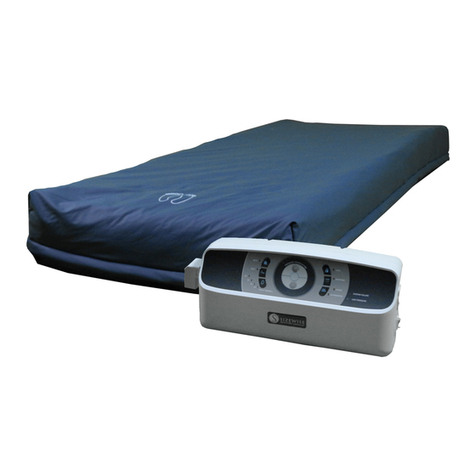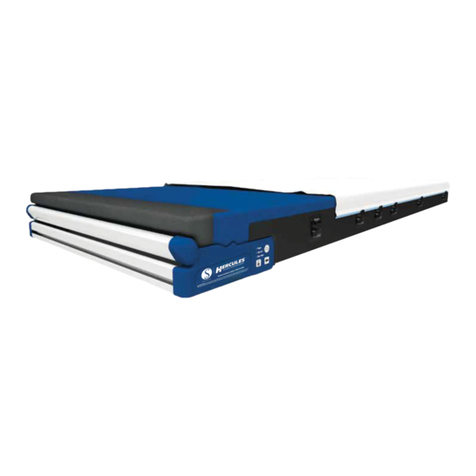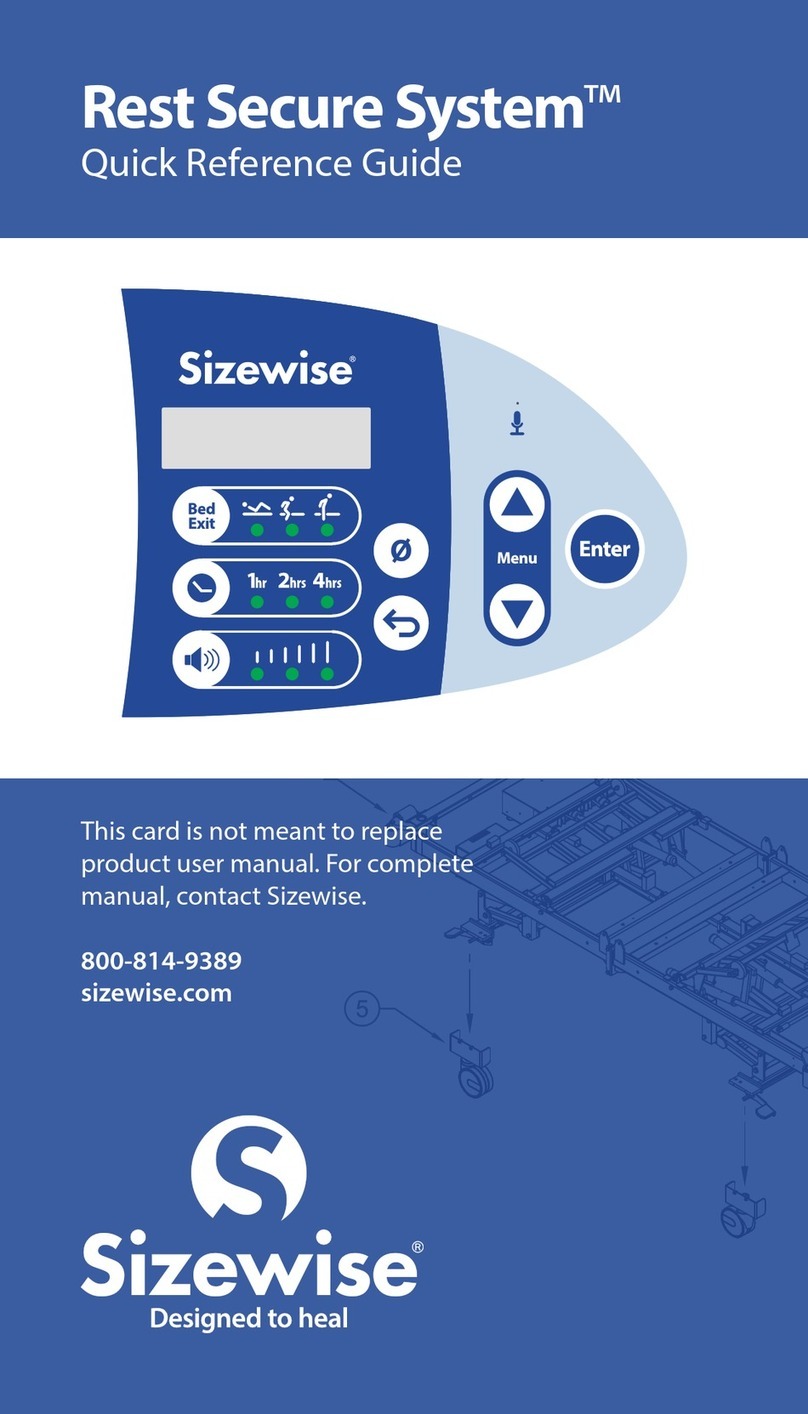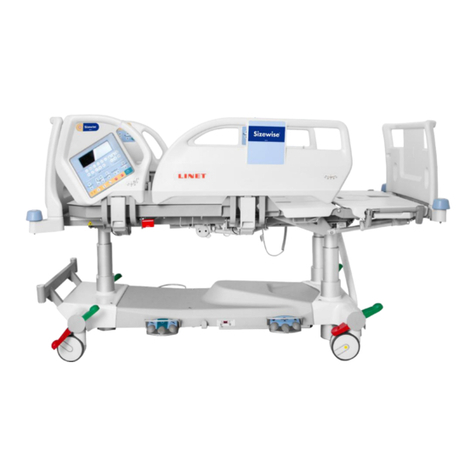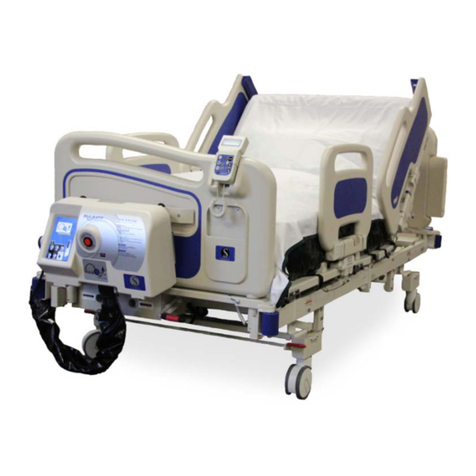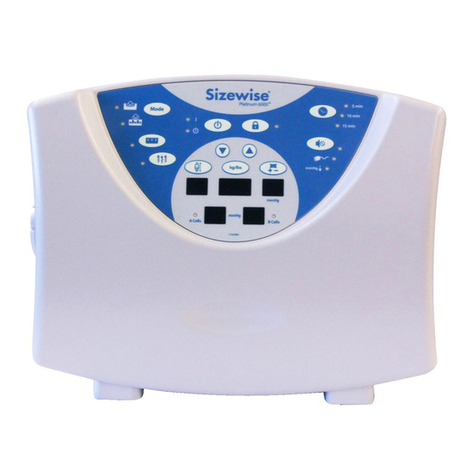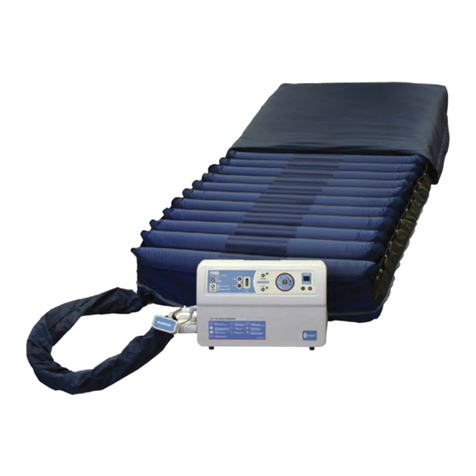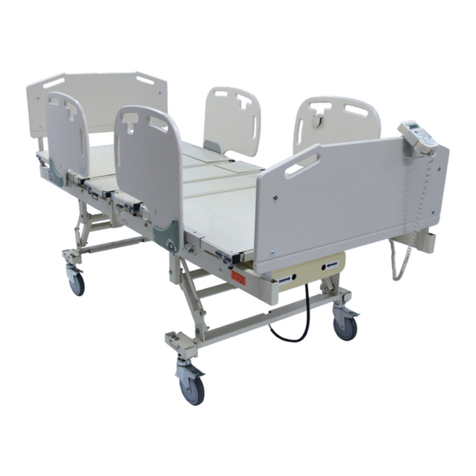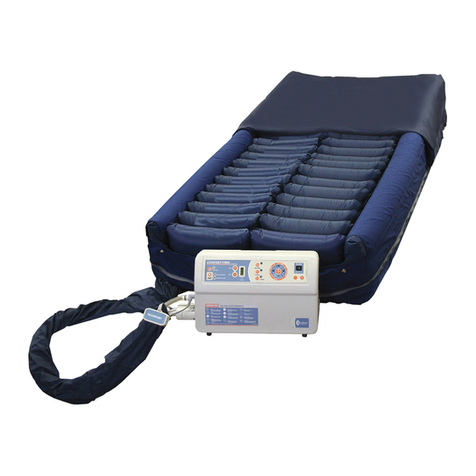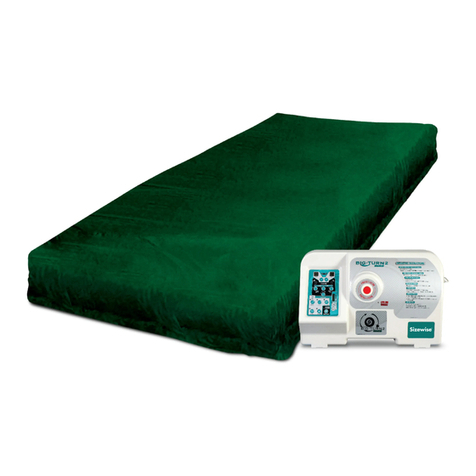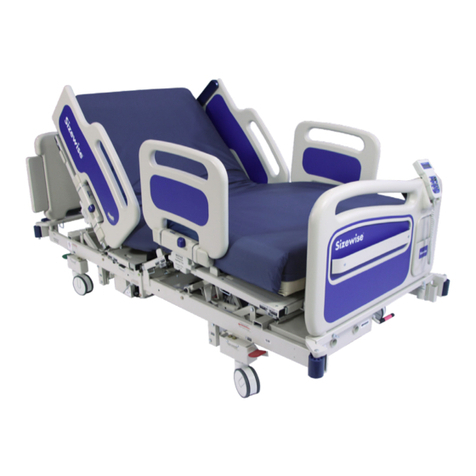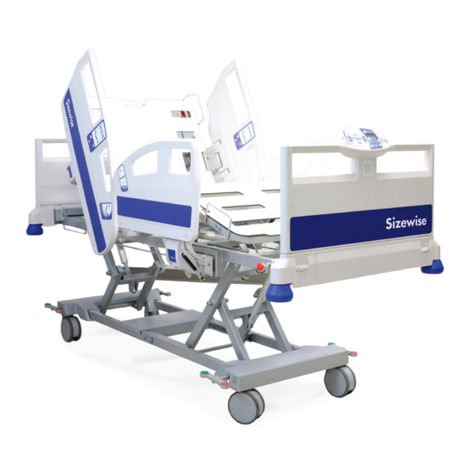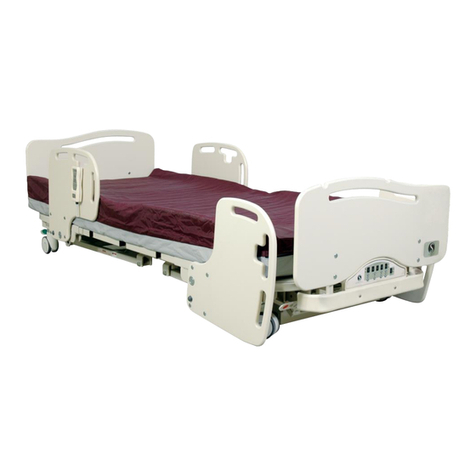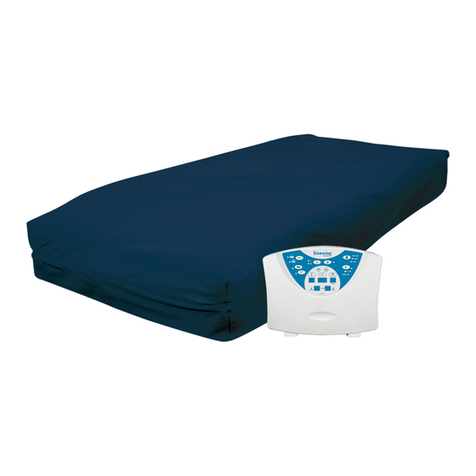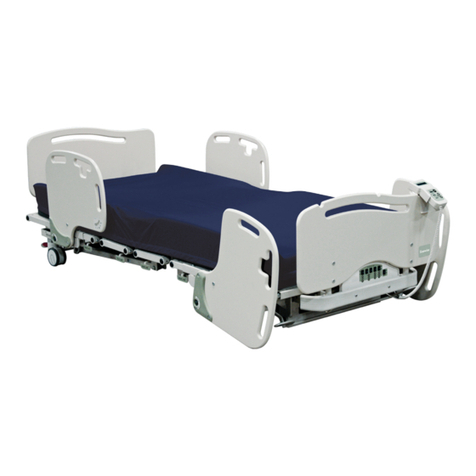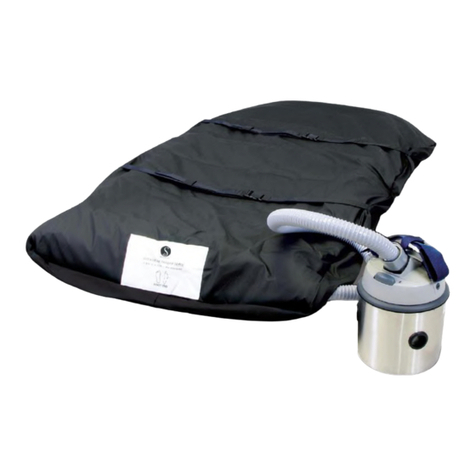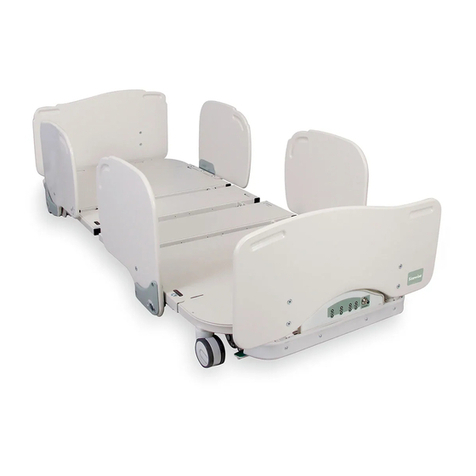
7
Important Safety Instructions
This Behavioral Health Bed™ is designed to be operated by the care provider. The bed
should not be operated by the patient.
When the care provider is not present follow the warnings listed below. Failure to
follow these warnings could result in patient and/or user injury as well as damage to
equipment or other property.
The Behavioral Health Bed™ should be in the lowest position.
The footboard lockout should be in the locked position with the key removed and placed
in a secure area.
The hand control should be removed and placed in a secure area.
The Behavioral Health Bed™ should be disconnected from AC power and the power
cord removed and placed in a secure area.
The bed is to be used in accordance with each facility’s policies and procedures.
Specifications
Exceeding the weight capacity and/or safe working load listed in the specifications could
result in patient and/or user injury as well as damage to equipment or other property.
Any change to the specifications can result in malfunction or damage to the SW Rest
Secure System™.
Unpacking and Set-Up Instructions
Failure to follow the set-up instructions could result in patient or user injury as well as
damage to equipment or other property.
During set-up, DO NOT remove the shoulder bolt on the center joint of the frame. It
allows one side of the frame to slide out when ready to lift the frame apart. Failure to
follow this warning could result in patient or user injury as well as damage to equipment
or other property.
To avoid electrical shock when plugging this bed into the wall outlet, only use grounded
or hospital grade outlets.
Follow EMC guidelines and safety precautions when the bed is connected to powered
source (see table of contents for EMC Section).
Radio wave sources such as radio stations, TV stations, amateur radio (HAM)
transmitters, two-way radios and cellular phones can affect this bed. Following the
warnings listed for electromagnetic interference should reduce the chance of the bed’s
unintended movement that could result in serious injury.
If the headboard/footboard is not properly secured, it could be removed and the patient
could harm himself or herself as well as others. It is imperative that the
headboard/footboard be secured properly at all times.
It is recommended to have the side rails upright at all times while the patient is in the bed.
However, the ultimate decision lies with the medical personnel who are on site and can
fully evaluate all factors.
If the side rails are not secured in the proper place, entrapment to the patient may occur.
Bed rail entrapment is a serious health risk that can result in serious injury or even death.
Sizewise recommends the care provider be mindful of the FDA guidelines relevant to bed
rail entrapment, as serious injury can result. These guidelines can be found on the FDA
website. It is the care provider’s ultimate decision whether or not to use bed rails with
the patient.




















